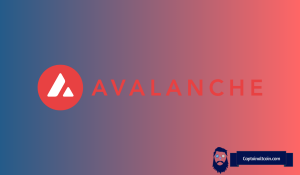
Avalanche (AVAX) and FET have recently gained attention due to bullish breakouts from significant chart patterns. AVAX has broken out of a falling wedge, while FET has confirmed an upside breakout from a descending broadening wedge.
These breakouts suggest potential strong upward momentum for both assets in the near term.
AVAX Breaks Out of Falling Wedge
According to Captain Faibik, an analyst, Avalanche (AVAX) is showing bullish strength after breaking out of a falling wedge pattern on a 3-day timeframe. The falling wedge, typically a reversal pattern, consists of a downward-sloping resistance line and a similar support line. The breakout above the upper resistance line indicates a possible trend reversal, shifting the momentum from bearish to bullish.
The breakout has established a new support range between $25 and $26, which was previously the resistance level of the wedge. AVAX is currently eyeing a significant pump, with the intended price spike pegged at $71.50, representing a potential 183.07% increase from its current price of around $28.17.
However, AVAX faces resistance at key levels. The first challenge lies around $31.50, where previous price consolidation occurred. Beyond this, the price may encounter strong resistance between $45 and $50, which served as a critical zone in previous price movements. If AVAX maintains its bullish momentum, it could ultimately reach the $71.50 target.
FET Confirms Upside Breakout
Captain Faibik's further analysis indicates that FET has broken out from a descending broadening wedge pattern, signaling potential bullish continuation. A descending broadening wedge typically indicates a reversal, and FET's breakout above the upper trendline suggests a possible shift from its previous downward trajectory.
FET is currently supported around $1.40, which aligns with the breakout level. The immediate resistance lies between $1.70 and $1.75, where the price is hovering post-breakout. However, the medium-term target for FET is much higher, with projections pointing towards $3.90.
Reaching the $3.90 target would require overcoming interim resistances at $2.00 and $2.50. These levels are crucial psychological and historical resistance zones that could affect the asset's ability to continue its bullish run.


 crypto.news
crypto.news CoinPedia News
CoinPedia News CoinoMedia
CoinoMedia Optimisus
Optimisus CFN
CFN CFN
CFN The Crypto Times
The Crypto Times Cryptopolitan_News
Cryptopolitan_News Crypto News Land
Crypto News Land






















